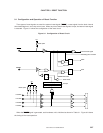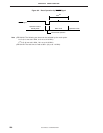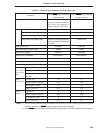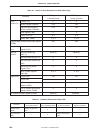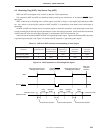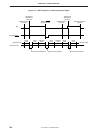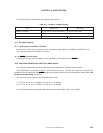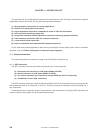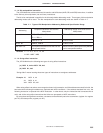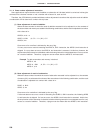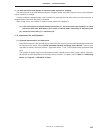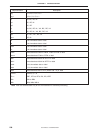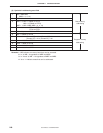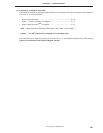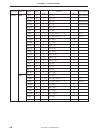
CHAPTER 11 INSTRUCTION SET
235
User’s Manual U10676EJ3V0UM
11.1.2 Bit manipulation instruction
The
µ
PD754244 has reinforced bit test, bit transfer, and bit Boolean (AND, OR, and XOR) instructions, in addition
to the ordinary bit manipulation (set and clear) instructions.
The bit to be manipulated is specified in the bit manipulation addressing mode. Three types of bit manipulation
addressing modes can be used. The bits manipulated in each addressing mode are shown in Table 11-1.
Table 11-1. Types of Bit Manipulation Addressing Modes and Specification Range
fmem. bit RBE, MBE, IST1, IST0, FB0H to FBFH
IE×××, IRQ×××
PORT3, 6, 7, 8 FF0H to FFFH
pmem. @L BSB0-3, PORT8 FC0H to FFFH
@H+mem. bit All peripheral hardware units that can be
manipulated bitwise
Remarks 1. ×××: 0, 2, T0, T1, T2, EE
2. MB = MBE MBS
11.1.3 String-effect instruction
The
µ
PD754244 has the following two types of string-effect instructions.
(a) MOV A, #n4 or MOV XA, #n8
(b) MOV HL, #n8
“String effect” means locating these two types of instructions at contiguous addresses.
Example A0: MOV A, #0
A1: MOV A, #1
XA7: MOV XA, #07
When string-effect instructions are arranged as shown in this example, and if the address executed first is A0, the
two instructions following this address are replaced with NOP instructions. If the address executed first is A1, the
following instruction is replaced with a NOP instruction. In other words, only the instruction that is executed first is
valid, and all the string-effect instructions that follow are processed as NOP instructions.
By using these string-effect instructions, constants can be efficiently set to the accumulator (register A or register
pair XA) and data pointer (register pair HL).
Addressing Range of Bit That Can be
Manipulated
Peripheral Hardware That Can Be
Manipulated
Addressing
All bits of memory bank specified by MB that
can be manipulated bitwise
.



